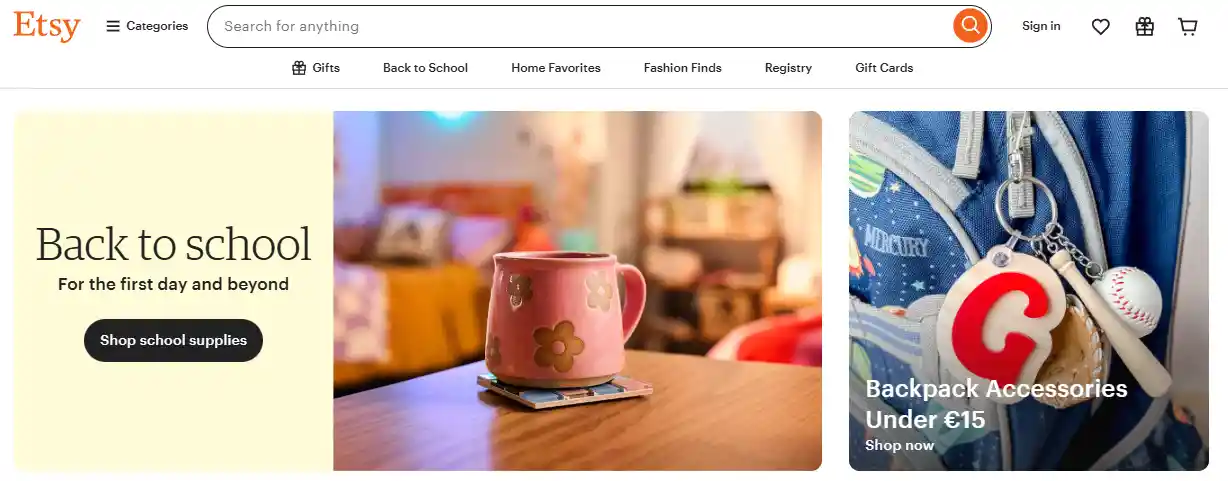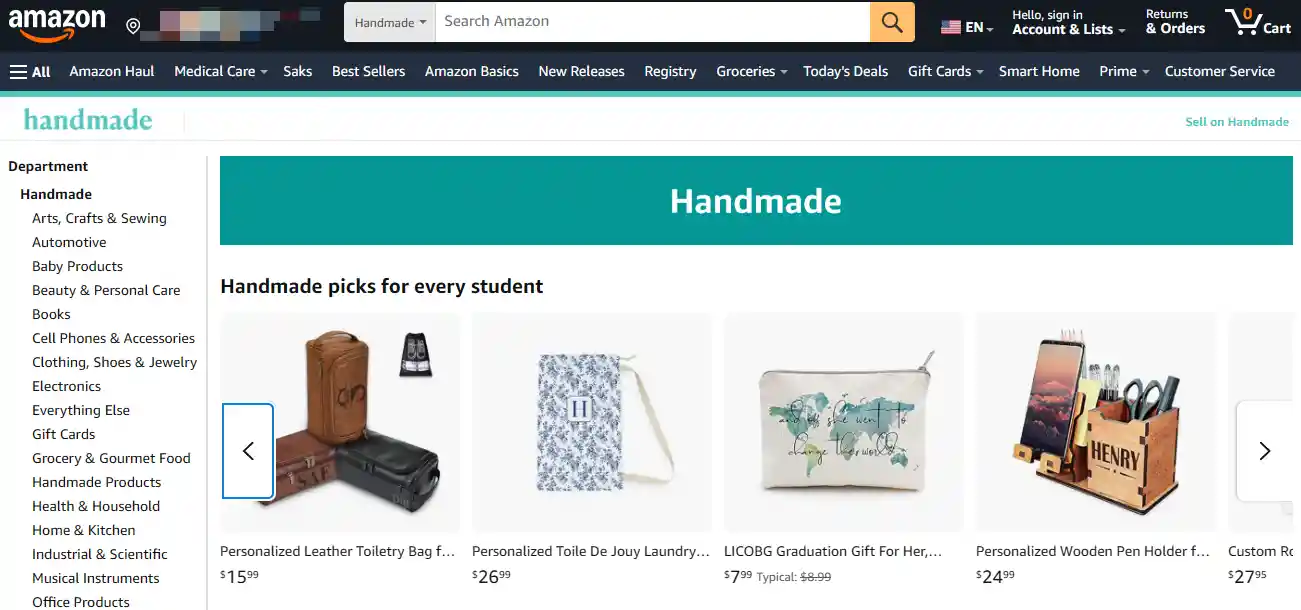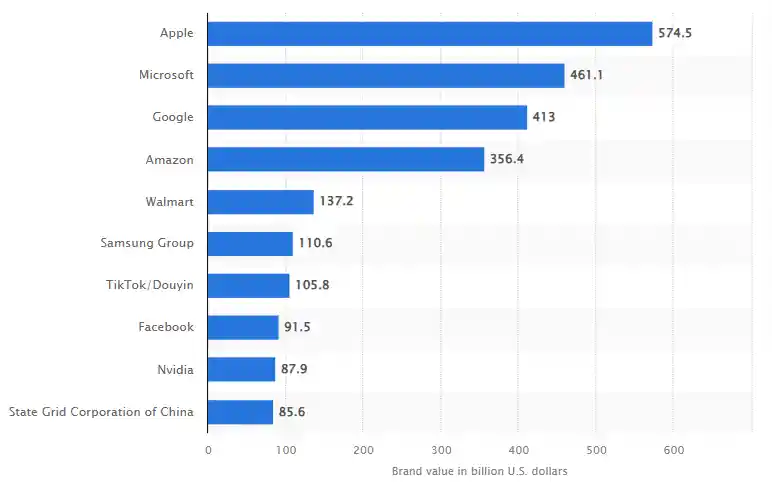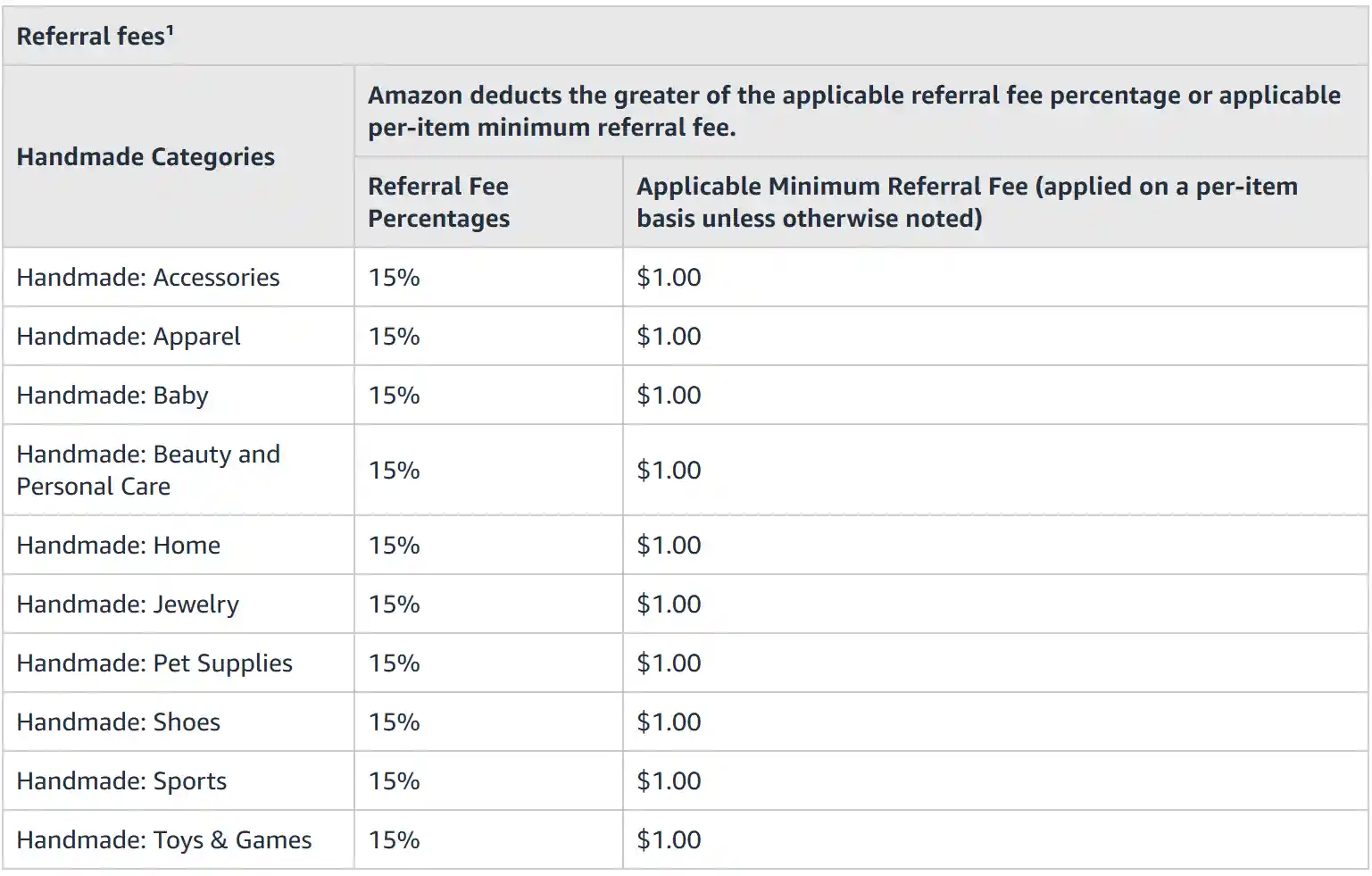
If you're a maker, artisan, or small business owner creating handmade goods, choosing the right platform to sell your products is one of the most important decisions you'll make.
Two of the biggest names in the handmade e-commerce world are Amazon Handmade and Etsy—each offering unique features, audiences, and seller experiences. But which one truly fits your brand, goals, and workflow?
From seller fees and customer base to fulfillment methods and branding, this article breaks down everything you need to know before choosing a platform.
What is Etsy
Etsy is an online marketplace focused on handmade goods, vintage items, and unique creative products. It brings together many independent sellers who showcase and sell their crafts.
The platform is well-known for supporting small creators and personalized items. Buyers enjoy finding special and creative products on Etsy.
By 2025, over 88.5 million active buyers worldwide purchased through the Etsy ecosystem. This number highlights Etsy's strong influence and wide popularity in the handmade market.

Pros and cons of Etsy
Pros of Etsy
- Global buyers: You reach millions of shoppers worldwide who specifically want handmade goods.
- Low startup costs: Listing an item costs just 20 cents, making it affordable to begin selling.
- Built-in audience: Buyers come to Etsy searching for unique items like yours already.
- Trusted platform: Customers feel confident purchasing crafts here due to Etsy's reputation.
- User-friendly tools: Creating listings and managing orders is straightforward for beginners.
Cons of Etsy
- Multiple fees: You'll pay a 6.5% transaction fee plus payment processing costs on every sale.
- Heavy competition: Standing out is tough when thousands sell similar products in your category.
- Design limitations: Customizing your shop's appearance has very few creative options available.
- SEO demands: Getting noticed requires constant keyword research and tag optimization work.
- Changing policies: Unexpected rule updates may affect how you run your shop without warning.
What is Amazon Handmade?

Amazon Handmade is a special section of Amazon dedicated to handcrafted products. It offers artisans a way to reach millions of customers worldwide. Sellers can list unique, handmade items just like on other platforms, but with the backing of Amazon's huge marketplace.
In 2025, Amazon was ranked as the fourth most valuable brand globally. This highlights the platform's strong reputation and extensive reach.
For handmade sellers, this means an opportunity to connect with millions of shoppers who trust Amazon for quality and reliability.

Pros and cons of Amazon Handmade
Pros of Amazon Handmade
- Massive audience: You get access to millions of loyal Prime members who trust Amazon.
- Zero listing fees: Startup costs are low since you don't pay to list individual items.
- Fulfillment support: Use FBA (Fulfillment by Amazon) for storage, shipping, and customer service.
- Built-in credibility: Shoppers feel secure buying handmade goods on Amazon's established platform.
- Prime eligibility: Products can qualify for fast Prime shipping, boosting buyer appeal.
Cons of Amazon Handmade
- High commission: A 15% selling fee applies to every item, plus potential FBA charges.
- Strict approval: Your application must pass manual vetting before opening a shop.
- Intense competition: Standing out is hard among millions of products and big brands.
- Limited customization: Few options to personalize your storefront compared to Etsy.
- Buyer communication: Direct interaction with customers is restricted by Amazon's policies.
Amazon Handmade vs Etsy: Key Differences
Overview
Here's a quick overview comparing key features of Amazon Handmade and Etsy to help you understand the main differences at a glance.
Feature | Amazon Handmade | Etsy |
Audience Size | Access to Amazon's huge global customer base. | Smaller but focused buyers who love handmade. |
Fees | No listing fees; takes a percentage of sales. | Charges listing fees plus a sales commission. |
Shop Setup | Shops look like part of Amazon's marketplace. | Easy to create a personalized storefront. |
Product Rules | Strict rules on what counts as handmade. | More flexible about handmade and vintage items. |
Marketing Tools | Relies on Amazon's large traffic for exposure. | Offers built-in tools for promotions and sales. |
Brand Control | Limited customization of shop appearance. | More options to build a unique brand look. |
Shipping Options | Can use Amazon's fulfillment services (FBA). | Sellers manage shipping themselves. |
While the table highlights the main differences between Amazon Handmade and Etsy, understanding the fee structures is key to choosing the right platform for your business.
Both platforms allow you to start selling without upfront costs, but how they charge you can impact your profits in different ways.
Let's take a closer look at how their fees work and what that means for your earnings.
Amazon Handmade Fees
Amazon Handmade requires the Professional seller plan at $39.99/month, but you get the first month free after approval.
Amazon Handmade doesn't charge regular listing fees. This means you avoid small upfront costs. However, it takes a 15% referral fee on every sale.
For example, if you sell an item for $50, Amazon takes $7.50. This higher commission can reduce your profit margin.

Etsy Fees
Etsy offers a free Standard plan and an optional Etsy Plus plan for $10/month, which gives extra tools.
Etsy charges smaller fees but more often. You pay $0.20 per listing, plus a 6.5% transaction fee and payment processing fees.
For example, selling the same $50 item could cost you about $3.25 in fees (listing + transaction + payment). If you list many items but sell few, these fees add up.
Read More:
Why More Handmade Sellers Are Moving to Amazon Handmade
More and more handmade sellers are choosing Amazon Handmade over other platforms. You might wonder why this shift is happening.
Amazon offers a large, steady audience. Your products get seen by millions. Sales tend to be more consistent, not jumping up and down without clear reasons.
Customer service is another big reason. When you need help, Amazon's seller support usually responds within a day. That quick support can save you time and stress.
Fees on Amazon Handmade are simple: a flat 15% referral fee with no extra listing or processing charges.
This makes it easier to try out new products without extra costs.
Amazon also provides helpful tools like seller tutorials and options for custom products. These features help you grow your business and connect with buyers more easily.
Amazon lets customers upload photos and see live previews for custom items. This improves the shopping experience and may lead to more sales.

Can Handmade and Regular FBA Products Sell Together on Amazon?
You might be curious if you can sell handmade and regular FBA products together on Amazon. The good news is, yes—you can.
Even though handmade and regular items are in different categories, they often show up side by side in search results. For example, if someone searches for "pillow cover," they could see both types of products mixed together.
You don't need a separate account to sell in both categories. One account works for both.
Also, you can send your handmade products to FBA for storage and shipping, just like regular items.
To sum it up, selling both handmade and regular FBA products together is possible. It helps you reach more buyers without extra hassle. This can be a smart way to grow your shop on Amazon.
Read More:
Amazon Handmade vs Etsy: Which Platform Is Right for You?
Choosing between Amazon Handmade and Etsy depends on what fits your needs best.
If you want a large audience and strong support, Amazon Handmade could be a good choice. It has clear fees and useful tools.
Etsy offers more ways to customize your shop and has a passionate community. It's great if you want a platform focused on handmade and vintage goods.
The key is finding the right place where your products shine and your business grows.
FAQs
What is the best site to sell handmade items?
Etsy attracts buyers seeking unique crafts. Amazon Handmade reaches massive mainstream audiences. Choose based on your product style and sales goals.
Is it better to sell on Amazon or Etsy?
Both have strengths. Amazon Handmade gives access to many buyers and solid tools. Etsy offers more shop customization and a focused handmade market. Your choice depends on what fits you best.
Can I sell on both Etsy and Amazon?
Yes! Many creators use both to maximize exposure. Manage inventory carefully to avoid overselling. Differentiate product lines or pricing per platform to attract varied buyers.
Is Etsy profitable for handmade sellers?
Yes, with good pricing strategy. Factor in Etsy's listing fees (20¢), transaction fees (6.5%), and payment processing. Unique, high-quality items typically yield better returns.
What percentage does Amazon Handmade take?
Amazon charges a flat 15% commission per sale. Additional FBA fulfillment fees apply if using their warehouse service. No listing fees for individual products.










 Global Shipping
Global Shipping





























